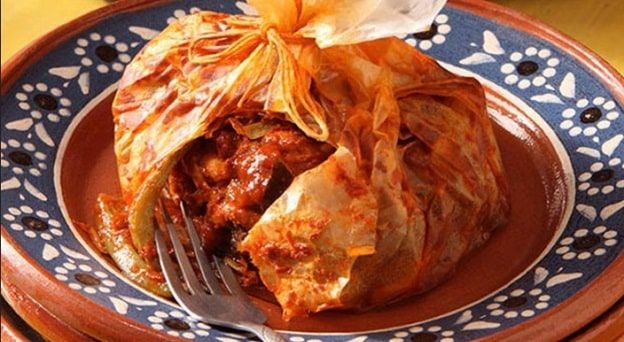The origins of mixiote, the typical prehispanic dish in Hidalgo
Mixiote is a meat stew, lamb, and mutton, with a chili sauce wrapped in a mamey leaf and it is believed that this dish originated in the south of Mexico.

Typical Mexican dish characterized for being steamed enchilada meat. It can be prepared with different types of meat and sauces wrapped in a leaf that comes from the membrane of the maguey pulquero stalk. It is usually cooked with pork or rabbit in a green sauce with nopales and epazote, or there may also be varieties with chicken in a guajillo chile sauce along with cloves, nopales, cumin, and epazote. Amecameca is famous for being the place where the tastiest mixiote is prepared.
From the Nahuatl metl, which means maguey, and xiotl, film or membrane of the penca, the mixiote is the leaf that comes off the cuticle of the maguey and was used for steaming by the Mayas, Aztecs, and Otomis. Mixiote involves a meat stew, usually lamb and mutton, with a chili sauce wrapped in a mamey leaf, and it is believed that this dish originated in the south of the Mexican Altiplanicie (State of Mexico, Tlaxcala, Puebla, Hidalgo, and Querétaro), since this is the area where the maguey pulquero is grown.
Currently, there is a great variety of mixiotes, you can find them commonly with beef, lamb, chicken, and rabbit, accompanied by some sauce, potatoes, and nopales; there are sweet ones (filled with fruits), and there are also some more exotic ones made with squirrel meat, escamoles, wild boar, deer or crocodile. It is believed that the first Spaniards to taste mixiotes were the Duchess Catalina de Aragón y Montealba and her husband Don Carlos Arsillaca y Albarrán on a trip through the Huasteca Hidalguense.




